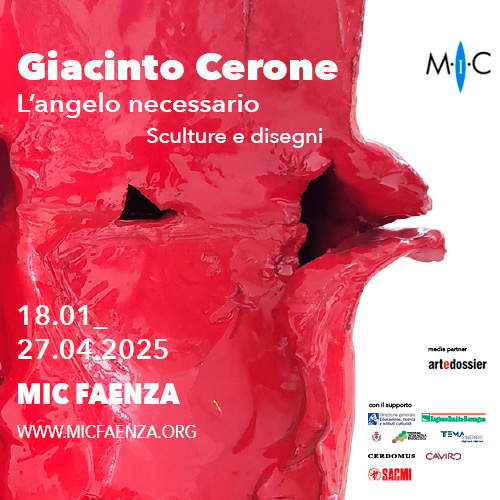Rome, restoration of the sumptuous fireplace in the Salone d'Ercole of Palazzo Farnese begins
Restoration work on the fireplace and allegorical statues in the Salone d’Ercole in Palazzo Farnese, home of theFrench Embassy in Italy, is starting in Rome . The operation is made possible thanks to the support of the Palazzetti company in collaboration with Fondaco Italia.
The fireplace, about four and a half meters tall, is commensurate with the room in which it is placed: the Salone d’Ercole. Flanked by two sheathed figures, the work is composed of a dozen varieties of polychrome marble. The whole is crowned by two putti holding the coat of arms of Ranuccio Farnese. The two sculptures, which came to Palazzo Farnese in 1628 from the funeral monument of Paul III, his grandfather, at St. Peter’s, recall the cardinal’s glorious ancestry.
The work is the work of Jacopo Barozzi known as Vignola and Guglielmo della Porta, and was made in polychrome seas beginning in 1564. For Vignola, who was commissioned after Michelangelo’s death to decorate and rear the palace, the work seems to be a means of affirming his talent and putting his theories into application. Indeed, the upper ornaments are similar to those that decorate the first page of his treatise Regola delli cinque ordini d’architettura, first published in 1562. A colorful jewel in a casket sprinkled with portraits of Roman emperors, it is composed of various ancient marbles, such as porphyry or portasanta, thus emphasizing the old-fashioned taste that pervades it. The incrustations, highly prized by Vignola, hark back to Italian and more specifically Roman marble craftsmanship, which came back into fashion in the 16th century. The interplay between the organic forms of the body of the female figures or nautilus shells, and the straight, structuring ones, allows a certain rhythm to the work. The color of the marbles themselves participate in creating this movement, their veining or depth highlighting each element. Vignola’s work is part of a broader Franco-Italian tradition, these Farnese fireplaces in fact inspired several architects including the Frenchman Charles-Antoine d’Aviler during the 18th century.
The last major restoration undertaking of these three works took place in 1928-1929. Under the direction of architect Emmanuel Pontremoli, who intervened on the entirety of the Hall of Hercules, the campaign was important and comprehensive, as indicated by the creation of new pedestals for the statues of the Gate.
The new restoration, which will not affect the vision of the work (the fireplace will always be visible and the public will be able to see the different stages of progress of the work, lasting two months) will last two months: the inauguration of the work is set for June 13. The intervention takes the form of extraordinary maintenance of the work and is aimed both at recovering the complete legibility of the white and polychrome marble surfaces and at enhancing the monument itself. The operations are divided into several phases: the accurate dusting of all surfaces, through appropriate dry methodologies; the cleaning to be carried out with appropriately supported aqueous methodologies; a possible deepening of the cleaning of some areas, through LASER technology; the securing of the areas affected by cracks and spalling phenomena; and the plastic and chromatic reintegration of the gaps. The restoration is being carried out by the Pragma Consortium - Conservation and Restoration of Cultural Heritage in Rome . For Palazzetti, this intervention marks the third stage of a journey that began in collaboration with Fondaco Italia with the restoration of four fireplaces in the Institutional Rooms of the Doge’s Palace in Venice and continued in Turin with that of the monumental fireplace in the Salone delle Guardie Svizzere in the Royal Palace.
Christian Masset, French ambassador to Italy, welcomes the restoration of "theseindispensable works from Palazzo Farnese. The fireplace known as the Vignola, designed in 1564 on a commission from Cardinal Ranuccio Farnese to the architect Jacopo Barozzi known as the Vignola, stands out as a monumental witness to the art of its time. I want to thank the sponsor, Palazzetti Group, and Fondaco Italia, who are intervening at a time of great cooperation between France and Italy for the protection of our heritage."
“We thank the Embassy of France for sensitively and enthusiastically welcoming this unique opportunity for cooperation,” says Chiara Palazzetti, CEO of the Palazzetti Group, “and we are really excited to actively contribute to the preservation of such a significant treasure in need of care inside Palazzo Farnese. With the start of the restoration work we accomplish, together with Fondaco Italia, a new step in our commitment to defend Italy’s artistic heritage.”
“We are grateful to Ambassador Christian Masset and all his collaborators for making this project possible,” says Enrico Bressan, president of Fondaco Italia. “Realizing this restoration thanks to Palazzetti, a leading international group in the home heating sector, is a source of great satisfaction for us demonstrating enlightened entrepreneurship that makes caring for the artistic heritage an integral part of its business activities.”
 |
| Rome, restoration of the sumptuous fireplace in the Salone d'Ercole of Palazzo Farnese begins |
Warning: the translation into English of the original Italian article was created using automatic tools. We undertake to review all articles, but we do not guarantee the total absence of inaccuracies in the translation due to the program. You can find the original by clicking on the ITA button. If you find any mistake,please contact us.





























